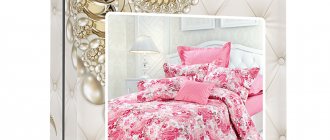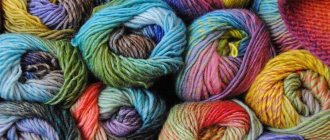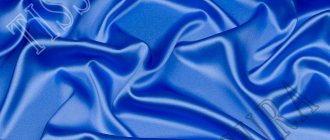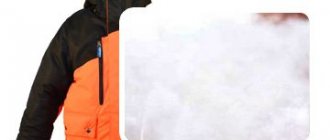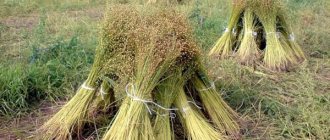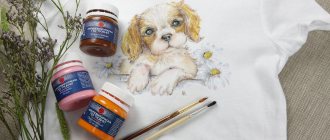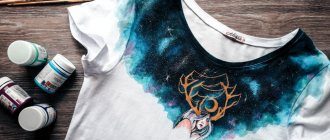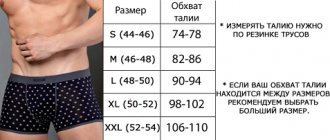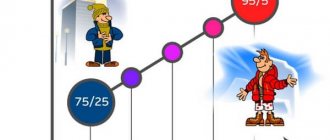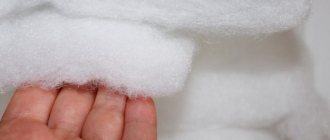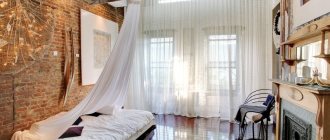Polyviscose fabric is an excellent modern analogue to natural fabrics such as linen, cotton and even silk. Its name is directly related to its two constituent fibers: polyester and viscose. This is a surprisingly soft material, similar in properties to cotton and silk. Further about what kind of fabric polyviscose is, what is made from it and why it is so good.
Description and composition
Polyviscose, what kind of fabric is it, natural or not? Polyviscose fabric contains a percentage of natural viscose and synthetic polyester - hence the name.
Polyester and viscose - what are these fabrics?
- Viscose is a fiber obtained from cellulose by processing wood, that is, a natural material obtained artificially.
- Polyester is a completely synthetic material obtained from oil refining, its melt.
Which is better, viscose or polyester? There cannot be a definite answer here, because each material has its own pros and cons. Viscose is environmentally friendly, breathable and absorbs water, and polyester is a very strong and wear-resistant material.
Polyviscose contains viscose, polyester and, sometimes, elastane in different proportions; now we’ll figure out what kind of fabric it turns out.
- 70% polyester, 30% viscose - what kind of fabric is this? Depending on the manufacturing method, the material can look like silk, linen or even wool. Different types of material have several qualities in common - pleasant tactile sensations, strength and wear resistance.
- What kind of fabric is 30% viscose, 65% polyester, 5% elastane? The previous option has one, but very significant, disadvantage - it does not stretch well. Adding a small percentage of elastane allows the material to stretch well in different directions, which, in turn, sufficiently expands the range of its applications.
In general, the material can be described as follows: soft, delicate, shiny, flows and forms beautiful draperies.
Price – from 450 rubles.
How to distinguish viscose from polyester
Viscose and polyester differ in appearance and feel.
There are several more criteria that allow you to accurately determine the type of material:
- Appearance. Viscose has a shine that is characteristic of natural silk fabric. This is explained by the fact that the raw materials used to make the material are natural. The shine of polyester, on the contrary, resembles metallic.
- Strength. With strong tension, viscose is not difficult to tear; polyester is less susceptible to abrasion and tearing.
- Flammability. Polyester melts when exposed to high temperatures, viscose burns with an even flame.
- To the touch. Products made from viscose are soft, while polyester does not feel like a soft and comfortable fabric when touched.
- Trimming. Due to the high strength of the threads, polyester is not easy to cut; viscose fabric is cut easily and evenly.
- Pile. Polyester is smoother than viscose, which is explained by the polyester content.
Advice Do not boil or try to bleach viscose, since the basis of the material is cellulose fibers. Polyester will not be damaged by boiling and the use of bleaches; it is resistant to such effects.
Properties
It is the composition that determines the properties of this matter.
Advantages:
- Good breathability and hygroscopicity (natural viscose has twice the hygroscopicity of cotton)
- Does not cause allergic reactions
- The material is very easy to care for
- Soft, lightweight and pleasant to the body material provides high wearing comfort
- High resistance to wear, abrasions, tears
- The addition of elastane ensures that the product will keep its shape perfectly - stretch and return to its original state.
- Does not stretch on elbows and knees
- Forms very beautiful draperies and folds
- Does not accumulate static electricity
- Doesn't wrinkle
- Not expensive
The disadvantages include the fact that over time, pellets may form on the product. Our expert will tell you how to remove chewing gum stains from jeans.
How it all began
Polyviscose is a combination of viscose and polyester.
The history of polyviscose began with the creation of the world's first artificial (but not synthetic) fabric. This material was called viscose, otherwise known as wood silk. In 1664, the Englishman Robert Hook tried to artificially create threads similar to silk. Unfortunately, the experiment failed, but the idea was voiced and captured the minds of the inventors.
In 1855, it was possible to obtain a strong fiber from a solution of tree bark and adhesive rubber. The viscous substance stretched, resembling a thread in appearance, and when frozen, it retained its elasticity. This method was expensive, required special training of workers and did not gain popularity.
In 1884, a new method for making wood thread was invented. The engineer and chemist Ilie de Chardonnay began to be considered the official creator of viscose. The technology was patented, but the canvas was flammable and not safe.
In 1891, English chemists invented xanthogenation - the treatment of cellulose raw materials with acids of the same name. The resulting material - viscose - was similar to natural fabrics. The material was elastic, hygroscopic, and did not cause allergies. The merit of the inventors was that they improved the process of dissolving cellulose.
Just one component—synthetic polyester—transformed tree silk into polyviscose. The material has become stronger and acquired all the beneficial properties of chemical fibers.
Application
How do polyester and viscose combine in clothing? They complement each other perfectly. The following are produced from polyviscose:
- Casual clothes (skirts, trousers, dresses, shirts)
- Formal clothing (office suits, school uniforms)
- Children's clothing
- Outerwear
- Lining
- Home interior textiles (curtains, tablecloths, bedspreads, bed linen)
- And even carpeting
We will try to tell you in the article how to wash a white bra by hand so that it becomes like new.
Manufacturing technology
To obtain fabric, wood pulp is crushed and mercerized, that is, treated with caustic soda. The solution looks like an orange lumpy mass. The threads are formed by pressing the solution through special molds with holes, then they are trimmed and dried.
Polyester is added to the fabric composition - a polyester synthetic fiber, which is obtained by heating and stretching polymers. The classic fiber ratio is 30% viscose and 70% polyester. To increase elasticity, manufacturers can add lycra, a stretchable synthetic thread.
In its structure, polyviscose is knitwear, that is, “non-woven”. This means that the material is not intertwined, not woven, but knitted - the threads go around each other, forming loops that are elastically connected to each other.
Fabric options:
- depending on the processing, the front side of polyviscose can be matte or with a silky sheen;
- The structure of polyviscose can resemble cotton, linen, silk or wool.
The result is a dense and durable material with properties reminiscent of cotton. All the disadvantages of natural fibers (wear, tendency to wrinkle) are mitigated by the addition of synthetics. In the same way, natural fibers of wood origin reduce the electrification, stiffness and difficulty of dyeing pure polyester.
Care
Caring for polyviscose products is quite simple:
- Before washing, turn the item inside out and fasten all the zippers - this will prevent puffs from forming on the item
- Wash by hand or in the washing machine on delicate cycle
- Water temperature - no higher than 30 degrees, aggressive detergents are prohibited
- Be careful with the spin cycle - do not twist the product, it is better to get it wet
- Drying - on a horizontal surface, away from heating devices
- Storage – folded
Caring for polyviscose products
Read about: cotton fabric with elastane: a combination of naturalness and functionality.
Products made from this blended fabric are easy to clean; you just need to follow the instructions on the label of the specific product.
Before washing, the product must be turned inside out and washed separately from items made from coarser materials. You can wash it manually or in an automatic machine on the “delicate fabrics” cycle. Do not use aggressive powders or chlorine-containing bleaches.
It is better to dry it flat out in a horizontal position, spread on a clean towel, away from radiators.
You can iron polyviscose if necessary, but usually only the seams require this, since it wrinkles a little. It also all depends on how much polyester is in the composition - the more of it, the lower the temperature of the iron should be, since synthetic fibers are destroyed under the influence of high temperatures. Ironing is possible from the inside out; the product must be dry.
On a note
It happens that pellets form on the surface of products in places most susceptible to friction (the shoulder and lower side of dresses and suits often come into contact with bags), and the overall appearance becomes untidy. In this case, there are special devices for removing them, after which the product is like new again.
Whatever polyviscose wardrobe item you choose, you can be sure that it will be comfortable to wear and, with proper care, will last a very long time.
© 2021 textiletrend.ru
Reviews
Yulia, 35 years old “My office suit is made of polyviscose. In principle, I'm satisfied. The material hardly wrinkles - that is, it always has a neat appearance. The body in the suit breathes - and this is also an important factor when you are indoors all day. This year my daughter will go to school, I think I’ll buy a school uniform from this material too.”
Tatyana, 32 years old “I bought a carpet made from this material, and now I laugh at the surprise of the guests - whether it is silk. The appearance of the product is indeed very attractive - shiny, cozy. And it’s quite easy to clean.”
Characteristics of double-thread fabric
Double thread flowers
A person who has great endurance is said to be strong-willed. Fabric that has great endurance and strength is similarly called double-thread. Moreover, they make it by weaving pairs of threads. The following types of weaves are used:
linen (canvas or matting); satin (satin); large-patterned (jacquard).
Initially, double thread was made only from cotton. Now they produce both homogeneous double-thread cotton types and mixed fabrics from cotton and polyester raw materials.
Double-thread fabric is available in two types:
basic unprocessed, finished.
The basic version is a harsh, durable material of rough manufacture. It is not subject to additional processing.
The finished fabric is refined with additional processing, including:
application of a multicomponent composition based on starch; drying with stretching; removal of deformations; calendering.
Double-thread processing enhances the existing advantages, of which the fabric has many, namely:
high strength; wear resistance; significant surface density; heat resistance; high resistance to mechanical stress; ability to maintain dimensions; good air permeability; hydrophobicity; inertness to the action of bacteria.
These qualities determine the popularity of the material.
Advantages of polyviscose suiting fabric
It is noteworthy that, despite its synthetic base, this fabric has all the advantages that are characteristic of natural fabrics. This is explained by the fact that its production uses cellulose from plants and trees. Among its main advantages it should be noted:
- Good breathability;
- Environmental friendliness;
- Hygiene;
- Elasticity, clothes made from it do not restrict movement.
Thanks to the addition of polyester, it is possible to give it greater strength and density without losing other properties and advantages. The increased strength properties of this fabric made it a worthy competitor to natural wool. Items made from polyviscose are aesthetically appealing and hold their shape well.
Thanks to some technical techniques used in production, it is possible to give it a texture similar to knitted, silk or woolen fabric. The surface of such fabric can be either matte or shiny, making things made from it very beautiful.
We offer polyviscose suiting fabric to buy wholesale in St. Petersburg!
This is interesting: Chatel: fabric composition, advantages, applications
The unexpected is nearby - double-thread knitwear
Double-thread fabric should not be confused with double-thread knitted footer.
Adventures with names can confuse the most sophisticated consumer. On store shelves there are products that clearly differ in appearance from the fabric described. At the same time, sellers confidently present the product as made from double thread. What's the matter? It turns out that there is knitwear knitted from two threads. They also call it footer. This type of knitwear is made mainly from cotton, sometimes synthetics are added.
The lining of knitwear is carried out mainly on the basis of the satin surface. A lining thread is placed in the loops, which can subsequently be subjected to napping. Double-thread footer can be produced with or without fleece. There is a 3 thread footer. The name we are interested in is not applied to it.
Advantages and disadvantages
The advantages of the material include:
- good indicator of breathability (skin will breathe, there will be no irritation);
- high wear resistance;
- elasticity;
- elasticity;
- excellent absorption and evaporation of moisture (in just a few minutes);
- thermal conductivity.
Advantages and disadvantages
There aren't many disadvantages. The only negative is the delicacy of care. For example, hot steam treatment is not recommended, otherwise the clothes will lose their shape. External contamination can be removed by dry cleaning.
This is interesting: Tencel fabric - what is it: composition, photo, differences in material
Advantages of footer knitwear
Knitted material, sometimes called double-thread, is popular. It is used to make clothes for children, sports suits, and home clothes for adults. Knitted footer has positive consumer qualities:
absorbs moisture well; effectively allows air to pass through; has a high heat-saving ability; does not form pills; does not stretch when worn; easy to care for.
Footer knitwear is produced in plain or colored prints, with geometric and floral patterns. The footer is very comfortable and looks great.
Thus, when you hear the name two-thread, clarify what is meant. Fabric and knitwear with this name have good, but completely different qualities. Make your choice and enjoy your purchase!
Double-thread fabric: double strength and reliability
There is such a super-strong fabric that is not afraid of either fire or water, and it is called Double-thread. The secret of its unprecedented strength and unique protective properties lies in the name itself. In this material, threads are passed along both the warp and the weft in pairs. Cotton is usually used as a raw material, but there is a double thread, where polyester threads are added to the cotton.
dvunitka-1dvunitka-2
As a rule, the fabric is created with simple or plain weaving. But two-thread woven fabric is known, like satin, satin and even jacquard. If the thread is passed 2 through 2, then the so-called “matting” is obtained.
What kind of material is this? Available in two types:
in the harsh, it is a rough, unprocessed fabric; in finished, or undergone additional processing, which eliminates possible distortions, the fabric is cut and smoothed.
